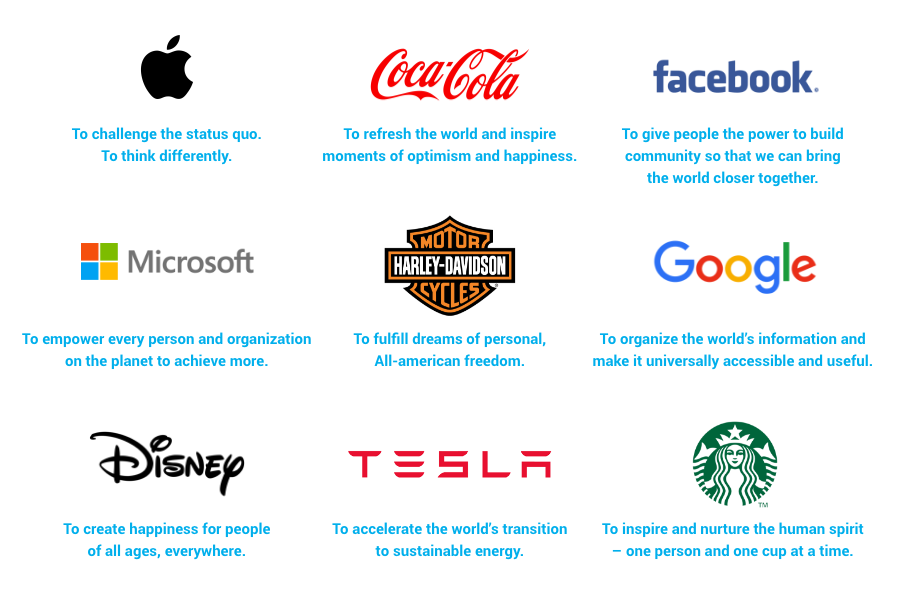Power is the pivot on which everything hinges. He who has the power is always right; the weaker is always wrong ~ Machiavelli
There exists a class of brands that differentiate themselves solely through the strategic principle of cultivating a cult of personality. These brands possess a deep-seated sense of mission, which extends beyond mere words and is deeply ingrained in their very being. They offer products or services that go beyond mere transactions; they offer a sense of belonging to a larger cause.
There's tremendous power when you connect someone to something bigger than themselves.
Create belonging
When you opt-in to these brands, you are not just buying a product or service; you are participating in a shared vision, a sense of purpose. These brands have successfully harnessed their cultural uniqueness and operationalized it, making it a competitive advantage in the marketplace.
Great brands are not just about the quality of their products or services; they are about the culture and values that they embody. They have a clear mission that is reflected in every aspect of their operation, from the way they conduct business to the way they interact with their customers or users.

What's a mission statement?
A mission statement is a brief statement or declaration that describes an organization's core purpose and goals. It typically outlines the company's reason for existing, its primary objectives, and how it plans to achieve them.
A well-crafted mission statement provides a clear sense of direction and purpose for the organization, guiding decision-making, and setting a standard for how the company conducts business. It also communicates the organization's values and serves as a unifying force for employees, users, and other stakeholders.
A mission statement should be concise, memorable, and meaningful. It should capture the essence of what the organization does, who it serves, and how it creates value. When done correctly, a mission statement can inspire and motivate people to work towards a common goal and contribute to the success of the organization.
Examples of missions:

At the heart of every compelling mission statement lies a strong action verb that captures the essence of what the organization does every day to achieve its vision. These action verbs represent the organization's commitment to making a meaningful impact and reflect its culture, values, and purpose.
By using action verbs, mission statements become more than just a statement of intent; they become a call to action. They inspire employees, users, and other stakeholders to align themselves with the organization's mission and contribute to its success.
Missions ≠ Visions
Are mission statements the same as vision statements? No.
A vision statement is more forward-looking and describes what the organization aspires to be in the future. It is a statement of the organization's long-term aspirations and goals, and it serves as a guidepost for decision-making and goal-setting. A vision statement is typically broader and more aspirational than a mission statement, and it focuses on the desired future state of the organization.
A mission statement describes what an organization does and how it does it, while a vision statement describes where the organization is headed and what it aspires to be. While they serve different purposes, they are both critical components of an organization's strategic planning process and help guide decision-making and goal-setting.
For example, SpaceX's vision is to "Occupy Mars".

Or take Ethereum as an example. Ethereum's mission statement is "a more globally accessible, more free and more trustworthy internet." Whereas their vision is to be "the world computer".
Another example of a vision statement was when Bill Gates claimed that Microsoft's goal was to place "a computer on every desk".

Manifesto
To engrain your mission, consider writing a manifesto.
Manifestos are powerful because they articulate a clear and compelling vision of what an organization stands for and what it hopes to achieve. Manifestos are typically passionate, persuasive, and inspiring, and they often use bold language and strong statements to convey a sense of urgency and purpose.
- Apple: Apple's "Think Different" manifesto was published in 1997 and is still remembered as a powerful statement of the company's values and vision.

2. Airbnb: Airbnb's "Community Compact" manifesto outlines the company's commitment to building a global community of hosts and guests who respect each other and the places they visit.
3. Google: Google's manifesto, "Ten Things We Know to Be True," outlines the company's core values and beliefs, including a commitment to putting users first and making information accessible to everyone.

So what makes a manifesto effective?
- Clarity: An effective manifesto should be clear and concise in its messaging. It should clearly articulate the organization's purpose, values, and goals in language that is easy to understand and remember.
- Passion: Manifestos are typically passionate, persuasive, and inspiring, and they should convey a sense of urgency and purpose. An effective manifesto should inspire people to take action and to align themselves with the organization's mission.
- Differentiation: A manifesto should differentiate the organization from its competitors by highlighting its unique strengths and values. It should explain what makes the organization special and why people should choose to work with or support it.
- Relevance: An effective manifesto should be relevant to the organization's stakeholders, including employees, customers, partners, and investors. It should speak to their needs, concerns, and values and provide a clear reason for why they should care about the organization's mission.
- Actionable: A manifesto should provide a clear guide for decision-making and action. It should outline practical steps that the organization will take to achieve its goals and provide a framework for measuring progress.
- Consistency: An effective manifesto should be consistent with the organization's actions and behaviors. It should reflect the organization's values and purpose in everything it does, from its products and services to its marketing and communication.
As an aside, one of my favorite examples of a manifesto is the crypto anarchist. Raw, short and visionary, this piece of communication connected with an entire generation's emotions.
Missions are moats
Crafting a powerful mission statement is the foundation of building a successful brand. It's not enough to simply state a mission; you must build a company culture that truly embodies it. When you do this, you create a culture-based competitive advantage that will withstand the test of time.
By operationalizing your mission, you're embedding it into every aspect of your organization. It becomes the guiding force behind your decisions, actions, and behaviors. This creates a powerful sense of purpose and direction for everyone.
A culture-based competitive advantage goes far beyond a product- or service-based advantage. While the latter is important for success, it's more transient in nature. Products and services can be copied or surpassed by competitors, but a strong culture built around a mission is unique and difficult to replicate. It creates a sense of loyalty and engagement with your brand that extends far beyond your products or services.
Build your brand and company culture around a compelling mission, and ensure that it's embedded in every aspect of your operations. Doing so will create a culture-based competitive advantage that will help your brand stand out from the crowd.



